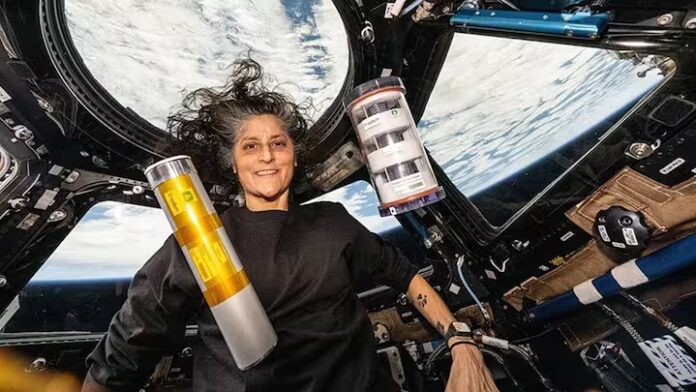NASA has announced a further delay in the return of astronauts Sunita Williams and Barry “Butch” Wilmore from the International Space Station (ISS). Initially scheduled to return in February 2025 aboard a SpaceX capsule, their mission has now been extended to late March or early April 2025 due to technical complications with Boeing’s Starliner spacecraft.
This unexpected extension marks a significant deviation from their original plan, which was for a brief eight-day stay in orbit. The astronauts, who launched aboard the Starliner in June 2024, will now spend over nine months in space, marking a challenging period for the mission.
Starliner Issues Lead to Extended Stay
Williams and Wilmore embarked on the first crewed mission of Boeing’s Starliner under NASA’s Commercial Crew Program, aiming to evaluate the spacecraft’s performance. However, technical issues with the Starliner’s propulsion system surfaced mid-journey, disrupting the mission timeline. After weeks of testing, NASA determined that the spacecraft was unsafe for a crewed return and decided to bring it back to Earth unmanned.
The Starliner’s failure marked a setback for Boeing, which had hoped to secure certification for regular crewed missions to the ISS following this test flight. With their primary return vehicle grounded, the astronauts found themselves reliant on SpaceX for their journey back to Earth.

SpaceX Steps In with Revised Plans
NASA turned to SpaceX to facilitate the return of Williams and Wilmore. The Crew-9 mission, which arrived at the ISS in late September 2024 aboard a Dragon spacecraft, included two empty seats for the stranded astronauts. Initially, all four astronauts were scheduled to return in February 2025.
However, delays in preparing a new Dragon spacecraft for Crew-10, which will replace Crew-9, have pushed the timeline further. Crew-10 is now expected to launch in late March 2025 at the earliest, with both Crew-9 and the stranded pair remaining onboard for an extended handover period.
This adjustment underscores the complexities of crew rotations on the ISS and the logistical challenges posed by unexpected technical failures.
Prolonged Stay Brings Challenges and Opportunities
The extension of Williams and Wilmore’s mission means the astronauts will spend over nine months in space, significantly longer than the originally planned eight-day assignment. Prolonged stays in orbit present unique challenges, including physical strain due to microgravity and psychological stress from extended isolation.
At the same time, this unplanned duration offers an opportunity for NASA to gather additional data on the effects of long-term space travel. Insights from their extended stay could inform future missions, including those aimed at exploring deeper space destinations such as Mars.
SpaceX, a key partner in NASA’s Commercial Crew Program, has played a critical role in maintaining regular six-month crew rotations for the ISS. The delay highlights the importance of redundancy and adaptability in managing space missions.

NASA’s Commitment to Safety and Innovation
NASA’s decision to delay the return of Williams and Wilmore reflects its unwavering commitment to crew safety. The agency has consistently prioritized the well-being of its astronauts, even when it requires significant changes to mission timelines.
The challenges faced during this mission also underline the evolving dynamics of NASA’s partnerships with private aerospace companies like Boeing and SpaceX. While the Starliner’s issues are a setback for Boeing, SpaceX’s ability to adapt and provide a solution reinforces its reputation as a reliable partner in human spaceflight.
A Test of Resilience and Collaboration
The extended mission of Sunita Williams and Barry Wilmore highlights the unpredictable nature of space exploration. From technical failures to operational delays, the journey of these astronauts demonstrates the resilience of the space community and the collaborative efforts needed to overcome challenges.
As NASA and its partners work toward the safe return of the astronauts, the mission serves as a reminder of the complexities involved in advancing human spaceflight and the importance of adaptability in achieving those goals

